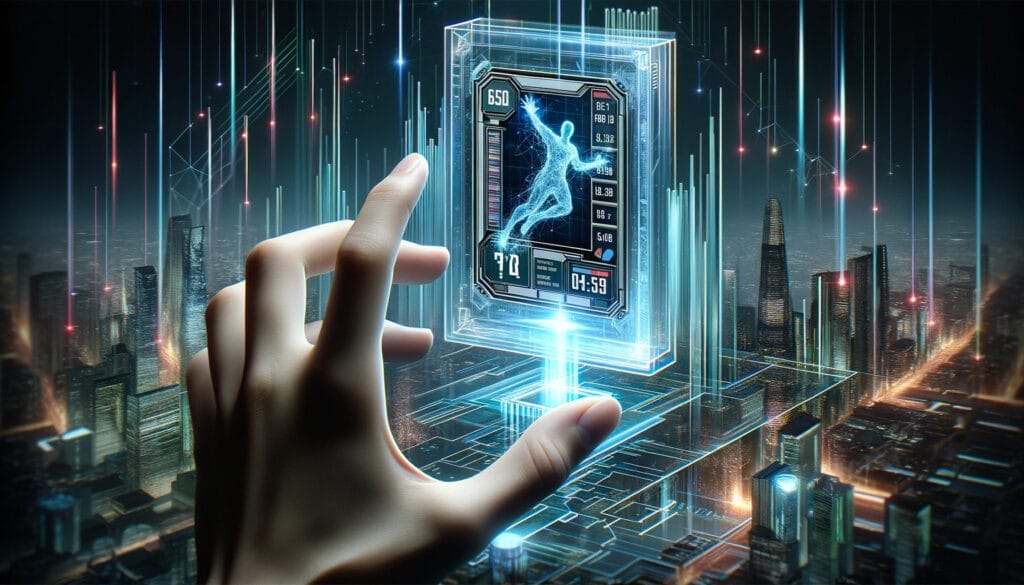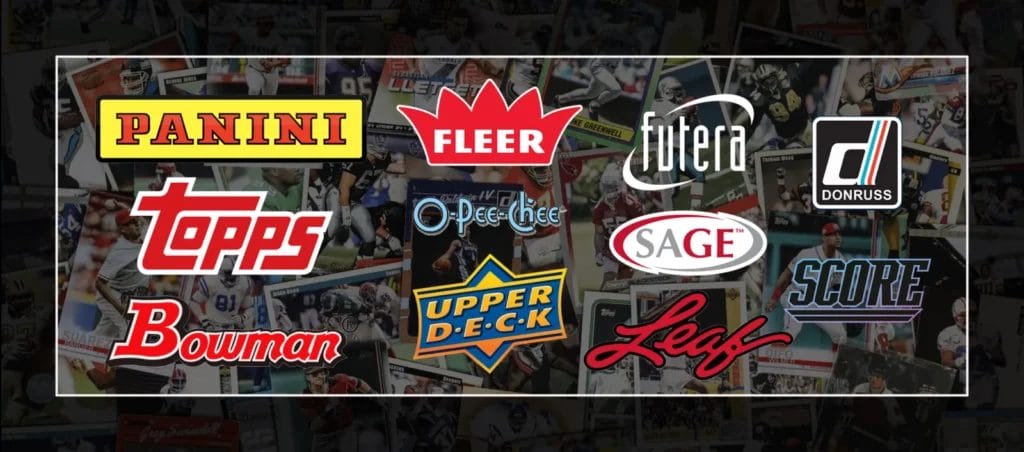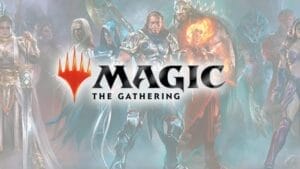
I.Introduction
The world of trading cards is undergoing a remarkable transformation. Once a pastime associated with childhood memories and tangible possessions, the trading card industry is now on the cusp of a digital revolution. This shift from physical to digital is not just a trend, but an evolution that is reshaping the way we collect, trade, and perceive these cherished assets.
In this post, we will discuss the technological advancements driving this change, market predictions for the future, and environmental considerations that come into play. Along the way, we’ll uncover how these changes are influencing the trading card market and what it means for collectors and investors alike.
The trading card industry has come a long way since its inception. The physical card, a tangible symbol of trust, has stood strong for over 70 years, evolving and finding its place in our fast-changing world. From the first payment card introduced in New York in 1950 to the current era of contactless payments, the journey of physical cards has been remarkable. Despite the rise of digital transactions, physical cards have never been stronger than today.
However, the advent of blockchain technology and non-fungible tokens (NFTs) is ushering in a new era for trading cards. This shift from physical to digital is not just a technological advancement, but a revolution that is reshaping the trading card industry.
Stay tuned as we delve deeper into these fascinating developments, their implications, and the future of trading cards. This journey will take us from the physical to the digital realm, exploring new frontiers in the world of collectibles.
Table of Contents
II. Technological Advancements: A New Era for Trading Cards
We are witnessing an extraordinary fusion of technology and trading cards, propelling the industry into uncharted territories. At the forefront of this revolution are two major players: Non-Fungible Tokens (NFTs) and Artificial Intelligence (AI).
Non-Fungible Tokens (NFTs) in Trading Cards
NFTs, essentially digital certificates of authenticity stored on a blockchain, have stormed onto the scene, bringing a new dimension to trading cards. They offer an exciting opportunity to own unique digital assets, from computer-generated media to sports trading cards.
These tokens have transformed trading cards into dynamic and intelligent experiences that were previously inconceivable. For instance, an intelligent NFT called “Alice”, developed by Alethea AI, has strong self-learning capabilities. Every interaction with people enhances Alice’s knowledge, making it a continually evolving digital asset.
The Experience Encapsulated by NFT Trading Cards
Imagine owning a digital card of a legendary sports moment, complete with the crowd’s roars, the commentator’s excitement, and the athlete’s triumphant celebration. This is the kind of comprehensive experience that NFT trading cards can encapsulate. It’s not just about the card itself, but the emotions, the cultural impact, and the history associated with it.
The Role of Artificial Intelligence (AI) in the Future of Trading Cards
Artificial Intelligence is also making its mark on the trading card industry. AI is being used in investment management to analyze vast amounts of data and generate insights, helping investors make informed decisions.
For instance, AI can predict market trends, identify profitable investment opportunities, and even anticipate high-risk events. It’s like having a digital advisor who can guide you through the intricacies of the trading card market. This AI-powered investment management can enhance performance, especially in volatile markets, making it a valuable tool for investors.
Indeed, these technological advancements are redefining the trading card industry. They offer new ways to collect, trade, and interact with cards, taking the industry from physical binders to the digital realm. As we move forward, these technologies promise even more innovations, making this an exciting time to be part of the trading card community.
III. Market Predictions: Charting the Course of Digital Trading Cards
As we gaze into the crystal ball of the trading card industry, it becomes evident that the future is digital. The rise of Non-Fungible Tokens (NFTs) and blockchain technology has redefined the landscape, creating exciting opportunities and challenges. Let’s take a closer look at the current state of the NFT market and what we can expect in the future.
Analysis of the Current State of the NFT Market
The NFT market experienced a meteoric rise in 2021, with daily sales reaching a peak of $325 million in May. However, the market has since cooled off, with total sales significantly down from their peak. While some might interpret this downturn as the death of NFTs, experts argue that it represents a period of stabilization.
Despite the slowdown, there is still a dynamic marketplace for those invested in the long haul. The decrease in sales is seen as part of the natural ebb and flow of any trend, leading to market stabilization. As the hype dies down, the market is left with genuine enthusiasts and investors who see the long-term potential of NFTs.
Future Predictions for Digital Collectibles
As the market stabilizes, we can expect to see the continued evolution and growth of NFTs. The landscape will likely evolve to incorporate NFTs more seamlessly into traditional investment portfolios. This evolution will enhance visibility, liquidity, and the number of potential applications.
Additionally, there’s a potential for further gamification in sports, with platforms like Sorare and Zed Run leading the way. As NFTs become more integrated into our cultural spaces, we can expect to see them expand into other areas, such as music, art, and entertainment.
The Potential Growth of Blockchain Technology in Trading Cards
Blockchain technology is the backbone of NFTs and will play a significant role in the future of trading cards. Despite the challenges faced by the NFT market, such as the lack of a centralized marketplace and increased transaction costs, the potential for growth is immense.
Blockchain networks like Ethereum are already exploring potential upgrades to handle the increasing demand. As the NFT market continues to grow, we can expect to see more competitors entering the blockchain market, adding another layer of complexity but also potential growth.
In conclusion, while the NFT market has seen some turbulence, the future of digital trading cards remains bright. Technological advancements and market predictions indicate a dynamic and evolving industry. As we continue to navigate this digital revolution, one thing is clear – the world of trading cards will never be the same again.
IV. Environmental Considerations: The Green Side of Digital Trading Cards
As we continue our journey through the digital landscape of trading cards, it’s essential to consider the environmental implications. While the shift from physical to digital trading cards holds exciting prospects, it’s not without its environmental impact. Let’s delve into the ecological footprint of Non-Fungible Tokens (NFTs) and explore potential solutions for a greener future.
The Environmental Impact of Physical Trading Cards vs. NFTs
Traditional physical trading cards come with an ecological cost. They require physical materials for production, packaging for protection, and transportation for distribution, all of which contribute to carbon emissions.
On the other hand, NFTs, being entirely digital, eliminate the need for physical materials and transportation. However, they come with their own set of environmental considerations. NFTs are minted on blockchain networks, and these processes can be highly energy-intensive.
Energy Consumption of NFTs and Blockchain Technology
The energy consumption associated with NFTs and blockchain technology has been a subject of debate. Blockchain networks like Ethereum, which are commonly used for minting NFTs, require significant amounts of energy for their operation.
According to estimates, minting a single NFT on a proof-of-work blockchain, like the one Ethereum used to operate on, consumes as much electricity as an average American household uses in about 47 days.
Potential Solutions for More Energy-Efficient Digital Trading
The environmental impact of NFTs and blockchain technology is undeniable, but it’s not a dead-end. There are potential solutions to make digital trading more energy-efficient.
One significant development is Ethereum’s transition from a proof-of-work to a proof-of-stake model in 2022. This transition, known as “The Merge,” has led to a significant reduction in the energy use of the Ethereum blockchain.
Additionally, blockchain developers are exploring ways to reduce the environmental impact of their operations. Some are considering using renewable energy sources to power their mining operations, while others are investing in carbon capture and storage technologies.
As we look to the future, it’s clear that the environmental considerations of digital trading cards cannot be overlooked. The challenge lies in balancing the exciting potential of these technologies with the need for sustainable practices. As the industry continues to evolve, it’s crucial to prioritize eco-friendly solutions and ensure that the future of trading cards is not just digital, but also green.
V. Trading Cards as Investment: A New Frontier

In the world of investments, trading cards have emerged as an exciting and profitable avenue. This shift is not just about nostalgia or fandom; it’s a strategic move driven by a dynamic market and significant returns on investment.
Trading Cards as a Form of Investment
Trading cards, while traditionally seen as a hobby, have become a serious investment opportunity. High-profile sales have grabbed headlines worldwide, and significant returns on investment have attracted a new breed of investors. For instance, an ultra-rare LeBron James card recently sold for a whopping £3.75m, matching the record for the most expensive sports card ever sold.
The trading card market has demonstrated substantial growth, and certain cards have appreciated in value exponentially over time. This growth is driven by various factors, including rarity, condition of the card, and the player it represents.
Impact of the Pandemic on Trading Card Investments
The COVID-19 pandemic has had a profound impact on numerous industries, and trading cards were no exception. During the lockdown, people around the world turned to hobbies to pass the time, leading to a surge in interest in trading cards.
This increased interest, combined with stimulus checks in certain countries, led to a boom in the trading card market. According to the Office for National Statistics, online sales reached higher than usual levels over the course of the pandemic, with online purchases representing 28.5% of total sales in October 2020 compared to 20.1% in February.
Policies Implemented by Stores Due to Increased Demand for Trading Cards
The increased demand for trading cards has led to changes in store policies. To ensure fair distribution and prevent scalping, some retailers have implemented purchase limits on trading cards. For instance, certain stores have imposed a limit on the number of packs a customer can buy in a day.
Furthermore, the rising popularity and value of trading cards have also led to security concerns. Some stores have moved valuable cards behind the counter or into locked display cases to prevent theft.
In conclusion, trading cards have evolved from a pastime into a lucrative investment opportunity. The market has shown resilience in the face of the pandemic, and the future holds promising potential. As more people recognize the investment potential of trading cards, we can expect this market to continue to flourish.
VI. Trading Cards in Popular Culture: A Cultural Phenomenon

Trading cards have transcended the realm of hobbies and entered the cultural mainstream, thanks to the influence of popular figures and the appeal of live unboxing events. The impact of these factors on the trading card industry has been profound, reshaping the way we perceive and engage with this timeless pastime.
The Role of Influencers and Popular Figures in the Trading Card Industry
The rise of social media influencers has played a significant role in the resurgence of trading card popularity. Celebrities and influencers, with their broad reach and influence, have brought trading cards to the forefront of popular culture. For instance, Logan Paul, a renowned YouTuber, has contributed to an 80% increase in the Pokémon trading card’s market size during 2020.
In addition to influencers, sports figures have also contributed to the popularity of trading cards. Athletes often have trading cards associated with them, which fans collect and trade. The value of these cards often increases with the athlete’s performance and popularity, making them a sought-after commodity.
Impact of Live Unboxing Events on Trading Card Popularity
Live unboxing events have become a popular trend in the trading card industry. These events, often streamed on platforms like YouTube or Twitch, involve influencers or collectors opening new packs of trading cards live for their audience.
These events create a sense of anticipation and excitement, as viewers watch to see what rare or valuable cards might be revealed. Unboxing events also provide a platform for community interaction, as viewers can comment and engage with the streamer and other viewers in real time.
Furthermore, these events often result in dramatic moments when a rare or valuable card is revealed, which can then be shared and viewed by millions, further increasing the visibility and popularity of trading cards.
In conclusion, the influence of popular culture on the trading card industry cannot be understated. From the role of influencers and popular figures to the impact of live unboxing events, these cultural phenomena have helped to transform trading cards from a niche hobby into a global sensation. As we look to the future, we can expect these cultural influences to continue shaping the trajectory of the trading card industry.
VII. Key Industry Players in the Future of Trading Cards

The trading card industry is a dynamic marketplace with a variety of key players shaping its trajectory. These industry powerhouses employ a range of strategies to stay competitive, innovate, and meet the evolving needs of consumers.
An In-depth Look at the Key Players in the Trading Card Industry
Several companies have established themselves as key players in the trading card industry. These include Topps, Panini, Upper Deck, SAGE, Leaf, Press Pass, Ace Authentic, In The Game, and TRISTAR.
Topps, for instance, has a long history in the trading card industry and is known for its baseball cards. In recent years, Topps has also embraced digital innovation, releasing NFT trading cards to cater to the growing digital market.
Panini, another major player, has secured licenses with major sports leagues like the NBA and NFL, allowing them to produce and sell official trading cards for these leagues. This strategy has helped Panini to carve out a significant portion of the sports trading card market.
Upper Deck is another noteworthy player that has a strong presence in the trading card industry. They have a wide range of offerings and are known for their quality products.
SAGE and TRISTAR are also significant players, with their unique offerings and strategies contributing to their standing in the industry. Other key players like Leaf, Press Pass, Ace Authentic, and In The Game also play an important role in shaping the trading card industry.
Strategies Used by Industry Players to Stay Competitive
To stay competitive, these key players employ a variety of strategies, including partnerships, new product launches, and mergers and acquisitions.
Partnerships with sports leagues and other companies allow these players to gain exclusive rights to produce certain trading cards, giving them a competitive edge.
New product launches, such as the release of digital trading cards and special edition sets, help to keep their offerings fresh and exciting for consumers. Mergers and acquisitions allow these companies to expand their market share and diversify their product portfolios.
Impact of Digitalization and COVID-19 on the Trading Card Industry
The trading card industry has been greatly impacted by digitalization. Many companies are shifting towards offering digital game cards, which are leading the market by type analysis. This shift towards digitalization has been further accelerated by the COVID-19 pandemic. With lockdown restrictions and stay-at-home orders, the demand for online games has surged, fueling the growth of the digital trading card market.
The Future of the Trading Card Industry
The trading card industry is a vibrant and competitive landscape, with key players employing a range of strategies to stay at the top. As the industry continues to evolve and embrace digital innovation, we can expect to see these players continue to shape the future of trading cards.
However, it’s also important to note the challenges the industry is facing. High costs associated with the game and high addiction to the game are projected to hamper growth. Moreover, there are concerns about collectors abandoning sports trading cards, which could potentially hinder the expansion of the outdoor sports trading card sector.
In conclusion, the trading card industry is a fascinating field to watch. With key players constantly innovating and adapting to changes, it will be interesting to see how the industry will evolve in the future.
Benefits of Playing Trading Card Games
Playing trading card games has several benefits such as improving brain capacity, activating brain networks, and enhancing task handling skills. It also helps to enhance analytical skills and cognitive abilities. These improvements in skills associated with the game are expected to fuel market growth in the coming years. Other benefits include enhancing memory skills, logical reasoning, relieving stress, strategic thinking, improving math skills, and promoting fun activities. The game teaches how to celebrate victories, play fairly, and accept different viewpoints. These factors are projected to boost the trading card game market growth in the upcoming years.
Regional Insights into the Trading Card Market
Asia Pacific is expected to represent the largest trading card game market share due to an increase in the millennial population and growing disposable income. Improved global income and increased demand for online gaming are projected to surge market growth. The growing number of smartphone users coupled with developing economies worldwide is projected to enhance market growth. An increase in internet penetration and a growing number of gamers are expected to drive market growth.
North America is projected to hold the second-largest position due to the rise in millennials’ spending and increased investment by prominent market players, which is projected to drive market growth. Increased interest in trading card games is expected to surge market growth. Increased industrialization and a rise in tablet and smartphone users, coupled with extensive mobile gaming adoption, are projected to foster market growth.
VIII. Conclusion
As we conclude our journey through the future of trading cards, it’s clear that this industry is in a state of constant evolution. From the rise of digital trading cards to the impact of influencers and live unboxing events, the trading card industry is not just a hobby, but a cultural phenomenon and a lucrative investment opportunity.
The trading card market is driven by a dynamic mix of factors, including the strategic moves by industry leaders, the surging demand for various applications globally, and the impact of global events like the COVID-19 pandemic.
Looking ahead, the future of trading cards appears to be bright. With the continued evolution of digital technologies and the growing recognition of the investment potential of trading cards, we can expect to see more innovation and growth in this industry.
In conclusion, the future of trading cards is not just about nostalgia or fandom. It’s about embracing the digital revolution, understanding the investment potential, and recognizing the cultural influence that trading cards have. As we continue to navigate this digital journey, we can look forward to an exciting future where trading cards are more than just a hobby – they are a cultural phenomenon and a lucrative investment opportunity.
So, whether you’re a seasoned collector or a newcomer to the world of trading cards, we encourage you to explore this evolving industry. With the right understanding and perspective, the future of trading cards promises to be as exciting and rewarding as the past.






